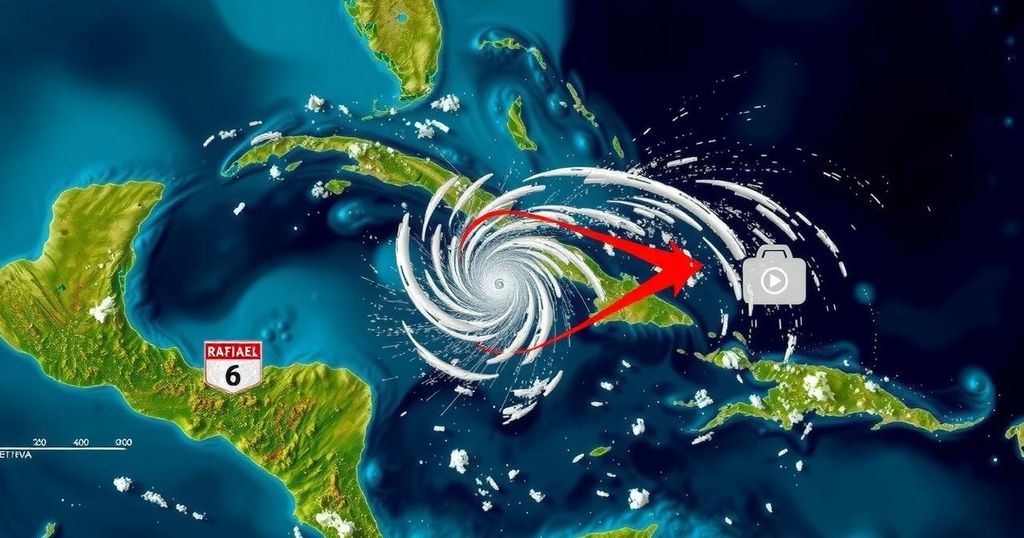Hurricane Rafael Weakens as It Moves Through Gulf of Mexico

Hurricane Rafael has weakened to a Category 2 storm with winds at 105 mph after striking Cuba. The storm is expected to slow as it moves westward into the Gulf of Mexico, with minimal expected impact on U.S. states. A separate low-pressure system in the northern Leeward Islands is also being monitored for potential development, bringing heavy rainfall to several Caribbean regions.
Hurricane Rafael, which made landfall in Cuba as a Category 3 storm on Wednesday afternoon, is currently weakening as it traverses the southern Gulf of Mexico. According to the National Hurricane Center in Miami, the storm downgraded to a Category 2 with sustained winds of 105 mph as of Thursday morning. It is anticipated to lose forward momentum, slowing down during its westward approach in the coming days. While Louisiana and other Gulf Coast states have been removed from the storm’s uncertainty cone, minor coastal flooding may still occur. Tropical storm-force winds are expected to affect Dry Tortugas, Florida, while western Cuba endures significant rainfall. Residents in southern and southwestern Gulf regions should remain alert for potential swells later this week. Simultaneously, NHC meteorologists are monitoring a low-pressure system generating disorganized weather patterns over the northern Leeward Islands. Forecasts suggest that this system may gradually evolve as it moves westward towards the Greater Antilles over the next couple of days. Despite its current status, heavy rainfall is anticipated across the Leeward Islands, Virgin Islands, Puerto Rico, Hispaniola, and the southeastern Bahamas through Saturday, although the likelihood of development stands at only 20%.
Hurricane Rafael, which initially developed in the Caribbean Sea, has transitioned over to the Gulf of Mexico, posing potential threats to coastal areas. The National Hurricane Center serves as an authoritative source for updates on hurricane activity, monitoring both Rafael’s trajectory and intensity. The storm’s impact on territories like Cuba, coupled with the likelihood of future storms in the Atlantic region, underscores the extreme weather phenomena frequently encountered during hurricane season. Awareness and preparedness among coastal residents are critical as storms can vary significantly in strength and path, leading to unpredictable consequences.
In summary, Hurricane Rafael is diminishing in strength as it continues its path through the southern Gulf of Mexico, with negative impacts largely averted for areas like Louisiana. However, residents near southern Gulf regions are urged to stay vigilant as swells may affect these waters. Concurrently, another low-pressure system is being monitored in the northern Leeward Islands with possible developmental activity expected. It is imperative that communities remain informed during this hurricane season to adequately prepare for potential severe weather events.
Original Source: www.nola.com








